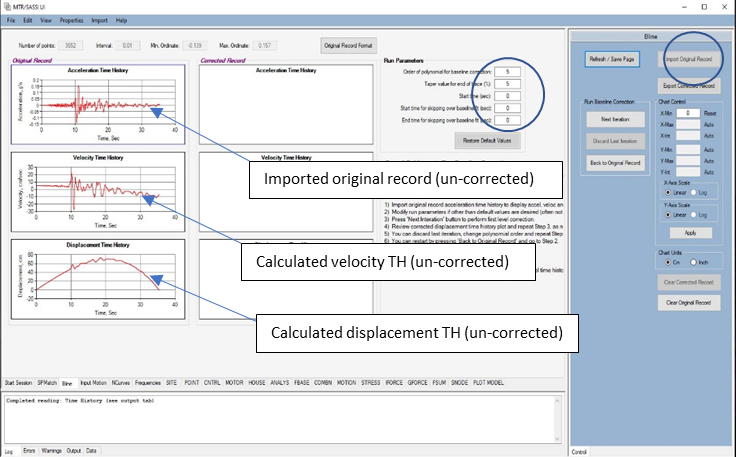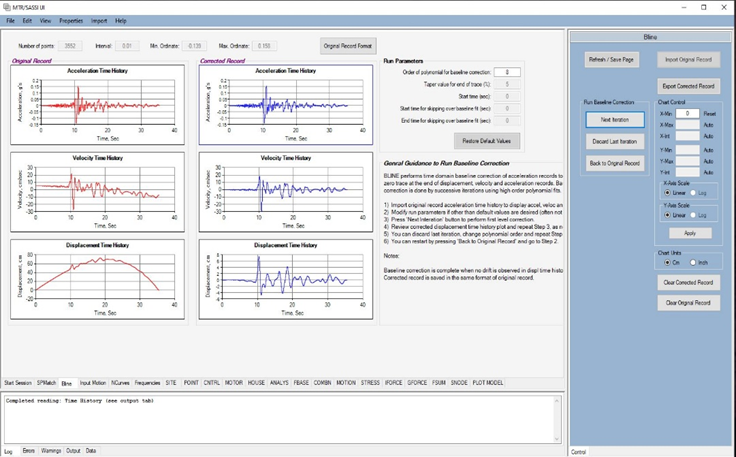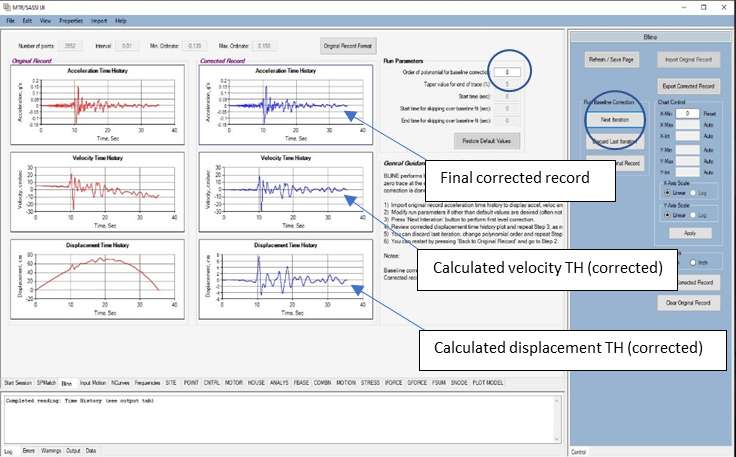MTR/SASSI implements a new baseline correction capability for time domain modification of an acceleration time history to correct the displacement drift caused by double integration. The methodology consists of applying zero padding, cosine tapers, polynomial fit and double differentiation to the original uncorrected acceleration record and subsequent interim results in an iteration scheme to get the final baseline corrected acceleration record.
Capabilities of Baseline Correction Program
- The new baseline correction module, Bline is executed via a graphical user interface implemented in MTR/SASSI.
- The input to the program consists of an un-corrected acceleration time history and following input parameters:
- Order of polynomial fit (between 1 and 10)
- Cosine taper (generally 2 to 5% of the total record length)
- Start time in seconds for baseline polynomial fit
- Start time in seconds for skipping over in the baseline procedure
- End time in seconds for skipping over in the baseline procedure
- Zero padding applied at the end of the record to improve baseline polynomial fit
- No zero padding is applied to the beginning of the record before baseline correction. This ensures the final corrected record is consistent with the original uncorrected record in the initial part of the motion. This is an important consideration since sometimes the end users may have tendency to remove any added initial padding to the record to expedite numerical calculations, which can lead to non-zero initial conditions in the resulting velocity and displacement time histories.
- The acceleration time histories of the original (un-corrected) and modified (corrected) records together with their corresponding velocity and displacement time histories calculated in the time domain are displayed in each iteration pass for visual inspection.
- In general, 5 to 8 iteration passes are required to complete baseline correction.
- After each iteration path, the GUI displays the acceleration, velocity and displacement time histories of the corrected record. After visual inspection of the results, the user can decide to end the operation or perform additional iteration passes using the same or new input parameters.
- The user has the option to discard the last iteration or return to the original un-corrected record to restart the baseline operation with new parameters.
- The final baseline corrected acceleration time history is saved in the working directory in the format that can be inputted in MTR/SASSI or other codes.
Benchmark Test Problem
A benchmark test problem is used to illustrate the time domain baseline correction process in MTR/SASSIui, as shown below. It basically consists of uploading the uncorrected acceleration time history, performing several iterations with user-defined input parameters to arrive at a baseline corrected time history and saving the results.
(1) Import original uncorrected record and set input parameters for the 1st iteration
(2) Make 1st iteration run, review results and modify parameters for the 2nd iteration
(3) Next iteration with higher order polynomial fit
(4) Final iteration
